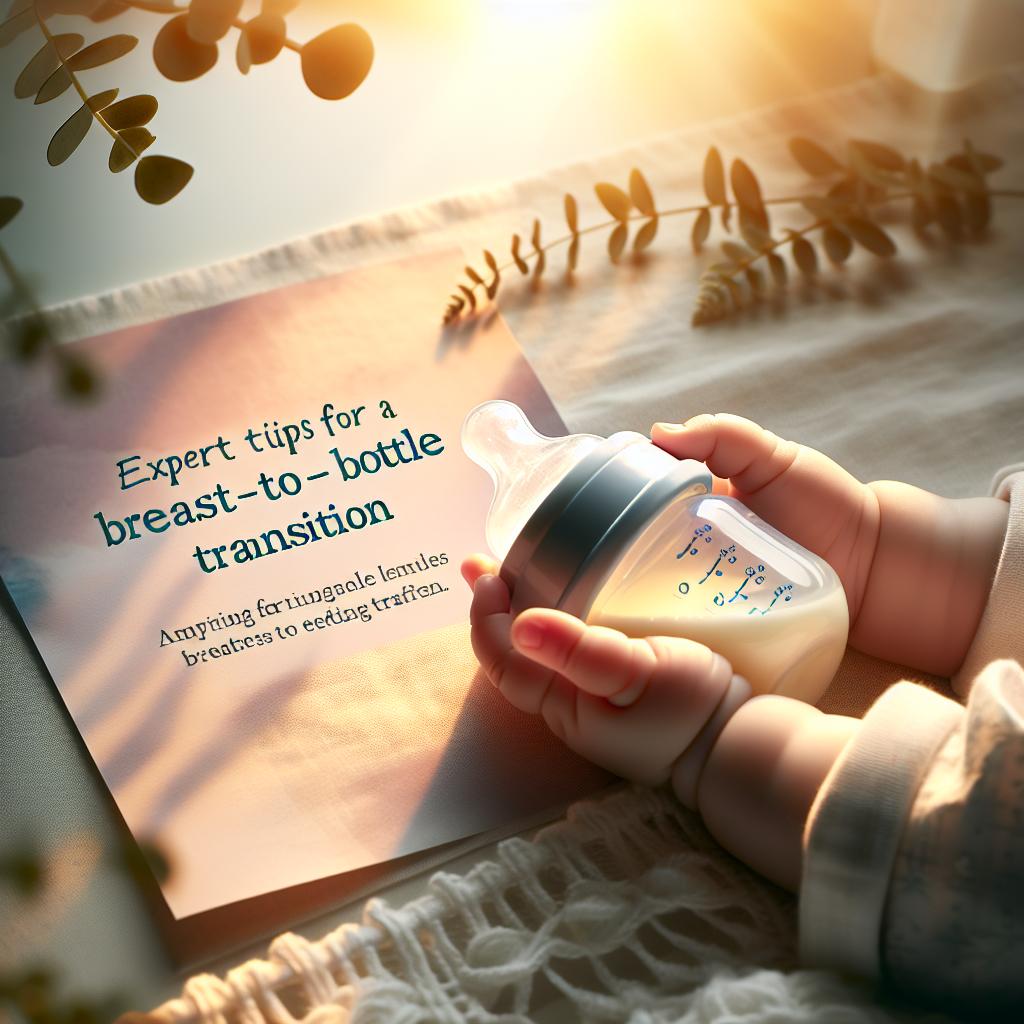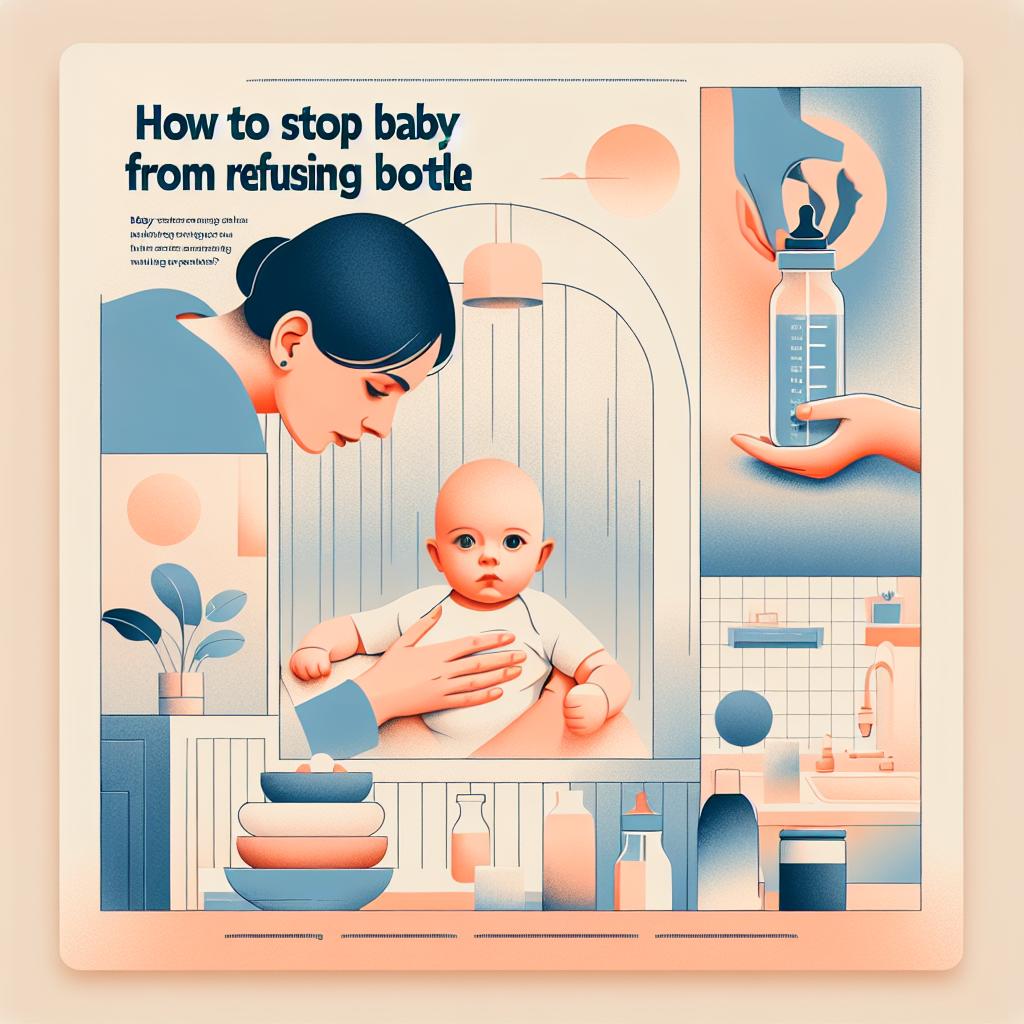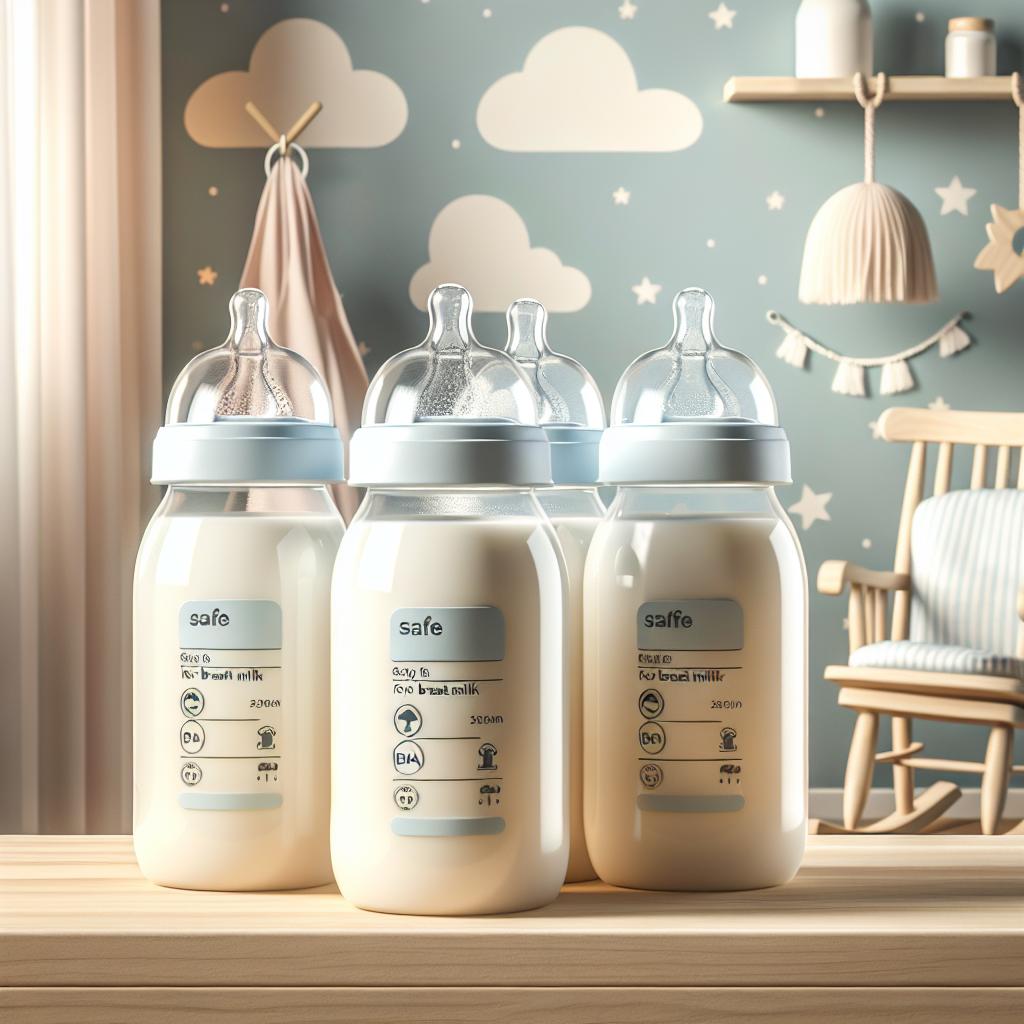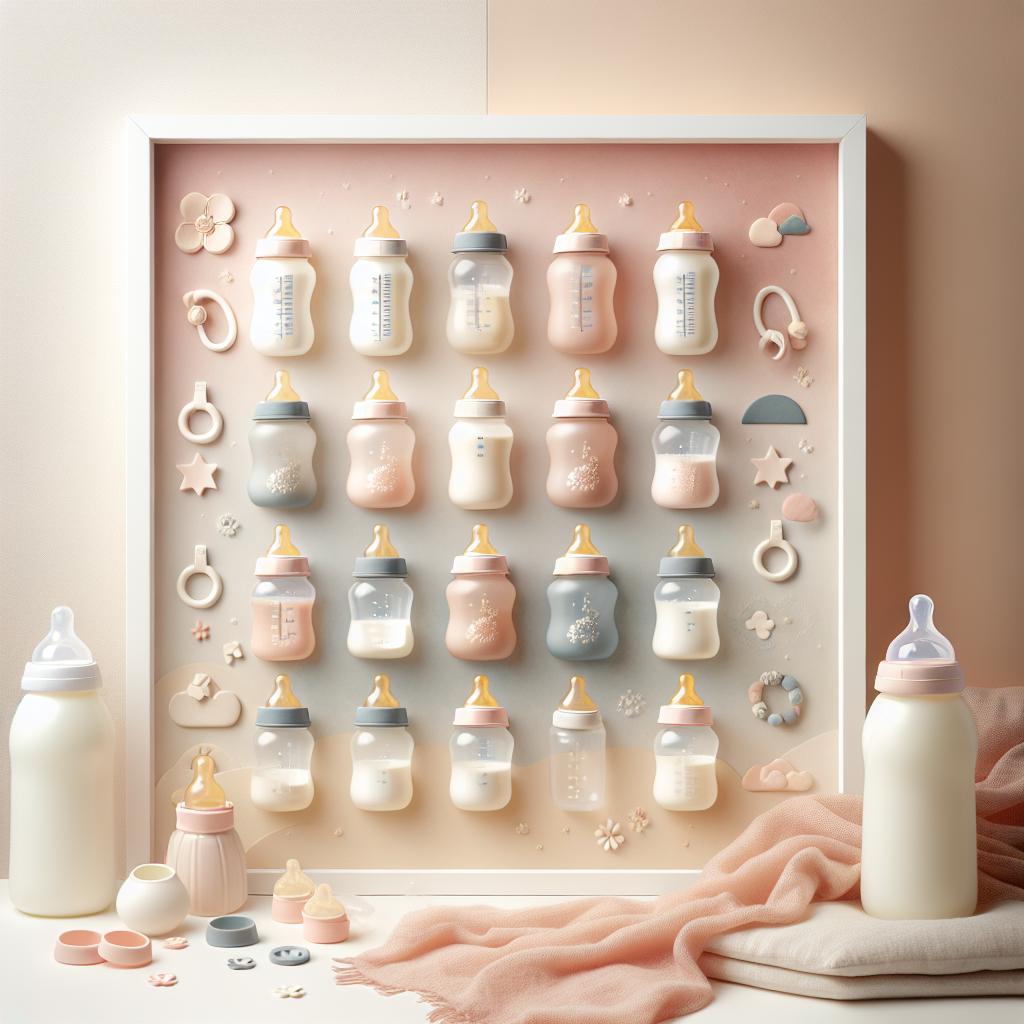Expert Strategies for a Smooth Breast-to-Bottle Transition
Understanding the Need for a Bottle Transition
There’s no denying that breastfeeding is an intimate bonding experience between a mother and her baby. However, there are various reasons why a breast-to-bottle transition may become necessary. Whether it’s time to go back to work, the baby isn’t gaining enough weight, or you simply need a break, introducing a bottle can feel like an intimidating change. But rest assured, with the right strategies, the feeding switch can be a seamless process.
Expert Tips for a Successful Feeding Switch
Let’s discuss practical strategies and expert tips to help make the feeding transition smoother:
- Start off Slow: Slow and steady is a key tip when managing a breast-to-bottle transition. If possible, it’s recommended to wait until breastfeeding is well-established before introducing a bottle. This usually occurs around 4-6 weeks of age.
- Use a Biomimetic Bottle: Biomimetic bottles are designed to mimic the natural breastfeeding experience as closely as possible. They can make the transition significantly smoother. You can read more about why babies prefer biomimetic bottles here.
- Introduce a Familiar Taste: Consider filling the bottle with expressed breast milk initially. This familiar taste can help your baby gradually adjust to the new feeding method.
- Let Someone Else Feed the Baby: Babies associate their mothers with breastfeeding. Having someone else offer the bottle initially can help in the transition.
- Choose the Right Timing: Try offering the bottle when your baby is happy and not overly hungry. This way, they can explore the new feeding method without becoming distressed.
Benefits of a Well-Managed Bottle Transition
While the shift from breast to bottle may seem daunting, a carefully managed transition brings a host of benefits. For starters, bottle-feeding gives you more flexibility. You don’t have to be physically present for each feeding, which provides more freedom for work or personal time. It also allows others to partake in feeding the baby, helping to forge deeper bonds between the baby and other family members.
Additionally, transitioning to a bottle can help in tracking your baby’s intake accurately. This is beneficial if weight gain is a concern. Bottle feeding can also provide a respite if you are experiencing discomfort during breastfeeding.
Seeking Assistance for the Transition
It’s okay to ask for help during this transition. Reach out to a lactation consultant for professional advice or connect with other parents who might have experienced similar challenges. With patience and proper guidance, the Breast-to-bottle transition can be a positive experience for both you and your baby.
Continuing the Breastfeeding Journey
If you’re worried that introducing a bottle might disrupt your breastfeeding journey, remember that it doesn’t have to be a one-or-the-other situation. It’s entirely possible to balance breastfeeding with bottle feeding, which many mothers have done successfully. You can check out one mother’s experience on how she managed to balance both here.
Developing a Feeding Routine
Once you have started the transition from breast to bottle, it’s important to develop a regular feeding routine. This will ensure that your baby continues to receive the nutrition they require. Ensuring consistent feedings with both breast milk and formula will help keep your baby healthy. Furthermore, a feeding routine can help your baby with daily structure, providing times for feeding, play, and rest.
Maintaining Milk Supply During the Transition
If you are still planning to continue breastfeeding alongside bottle feeding, it’s crucial to maintain your milk supply. This can be done through regular nursing, or by using a pump when you’re not able to feed directly. Even while your baby is getting used to drinking from a bottle, you should aim to keep up regular direct skin-to-skin contact during breastfeeding sessions, which can maintain your production of breast milk.
For more information, you may consult a lactation professional, who can guide you on the practical aspects of setting the breastfeeding and pumping routine. You can read more about what to expect when consulting a lactation consultant on this website.
Using the Right Equipment
Another critical aspect of the breast-to-bottle transition lies in using the right equipment. From selecting a suitable bottle to finding the right pump, the quality and design of the tools you use can significantly impact the transition experience. Remember, the physical act of sucking from a breast differs greatly from a bottle. You may need to experiment with a few different nipple sizes, shapes, and flow speeds before settling on what works best for your baby. Ideally, choose a bottle and nipple that closely resemble the breast to simulate a familiar feeding environment.
Also, using a high-quality breast pump can maintain your milk flow if you’re unable to breastfeed your baby. This thorough guide on combining breastfeeding and pumping could be beneficial.
Moving From Bottle Back to Breast
Knowing how to switch back from bottle to breast is equally crucial. Many mothers choose to mix-feed – alternating between breast and bottle – rather than completely stopping breastfeeding. The WIC Program’s “Loving Support© Makes Breastfeeding Work” campaign offers valuable resources to help moms make informed decisions about breastfeeding, including the transition from bottle back to breast. You can access these resources on their official website.
Additional Support in the Transition Process
Transitions are not always smooth sailing, but there are various resources available to guide you. The Pediatric Feeding Disorder program’s blog – HomePlate – has a dedicated series that includes articles on pediatric feeding disorder, the transition from bottle to cup, and much more. The information shared here can make the complex process of transitioning from breast to bottle – and eventually to a cup – easier for parents.
Frequently Asked Questions About the Breast-to-Bottle Transition
In the next few sections, common concerns about the breast-to-bottle transition are addressed in a question-and-answer format. By covering FAQs, we aim to simplify and demystify the process further.
Remember, every baby is unique, as is every mother’s breastfeeding journey. Do not rush through the breast-to-bottle transition. Keep communication open with your healthcare provider throughout the process. And most importantly, be patient with yourself and your little one as you navigate this new terrain together.






